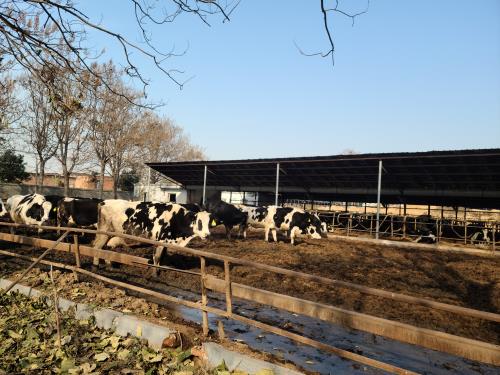Observation of changes in the ovaries of ewes after delivery using veterinary ultrasound. In the early postpartum period, due to the traction of the uterus, the ovaries droop into the abdominal cavity, making it difficult to monitor them using Veterinary ultrasound. On the 7th day after delivery, the weight of the ovaries decreased by 20-26% compared to the 1st day, which may be related to the degeneration of the corpus luteum during pregnancy and the underdevelopment of follicles in the early stages; Follicle growth occurs 14 days postpartum, and most of them ovulate within 21-25 days.

The ewe underwent surgery 28 days postpartum, and a "red body" was found on the ovaries after ovulation. During the surgery 40 days postpartum, the corpus luteum and large follicles were discovered. Based on the estrous cycle of the Small Tail Han sheep (17 days), it is inferred that there is a stagnation period of follicular development in the first week postpartum. This may be due to the disappearance of the corpus luteum during pregnancy, which hinders follicular development within 7 days postpartum; Small tailed Han sheep can ovulate around 25 days postpartum, indicating that there is no period of estrus after delivery, and there are normal changes in the ovaries on animal ultrasound.
If the rate of uterine involution is fast, it is possible to conceive around one month postpartum. However, there are more cases of quiet estrus or short cycle corpus luteum in the early postpartum period, which may be related to insufficient follicular development and incomplete uterine involution. According to reports, there is a certain correlation between the uterine status and ovarian functional activity in postpartum animals, and the speed of uterine involution seriously affects the ovarian activity in postpartum animals.
The slower the recovery of ovarian function, the worse the effect of ovarian hormones on the activation of uterine mucosa, which is also less conducive to uterine involution. The recovery of the uterus can also be well observed on animal B-ultrasound. The ovaries and uterus also inhibit pituitary function, preventing it from entering the estrous cycle. However, the mechanism of the correlation between the ovaries and uterus still needs further research.








